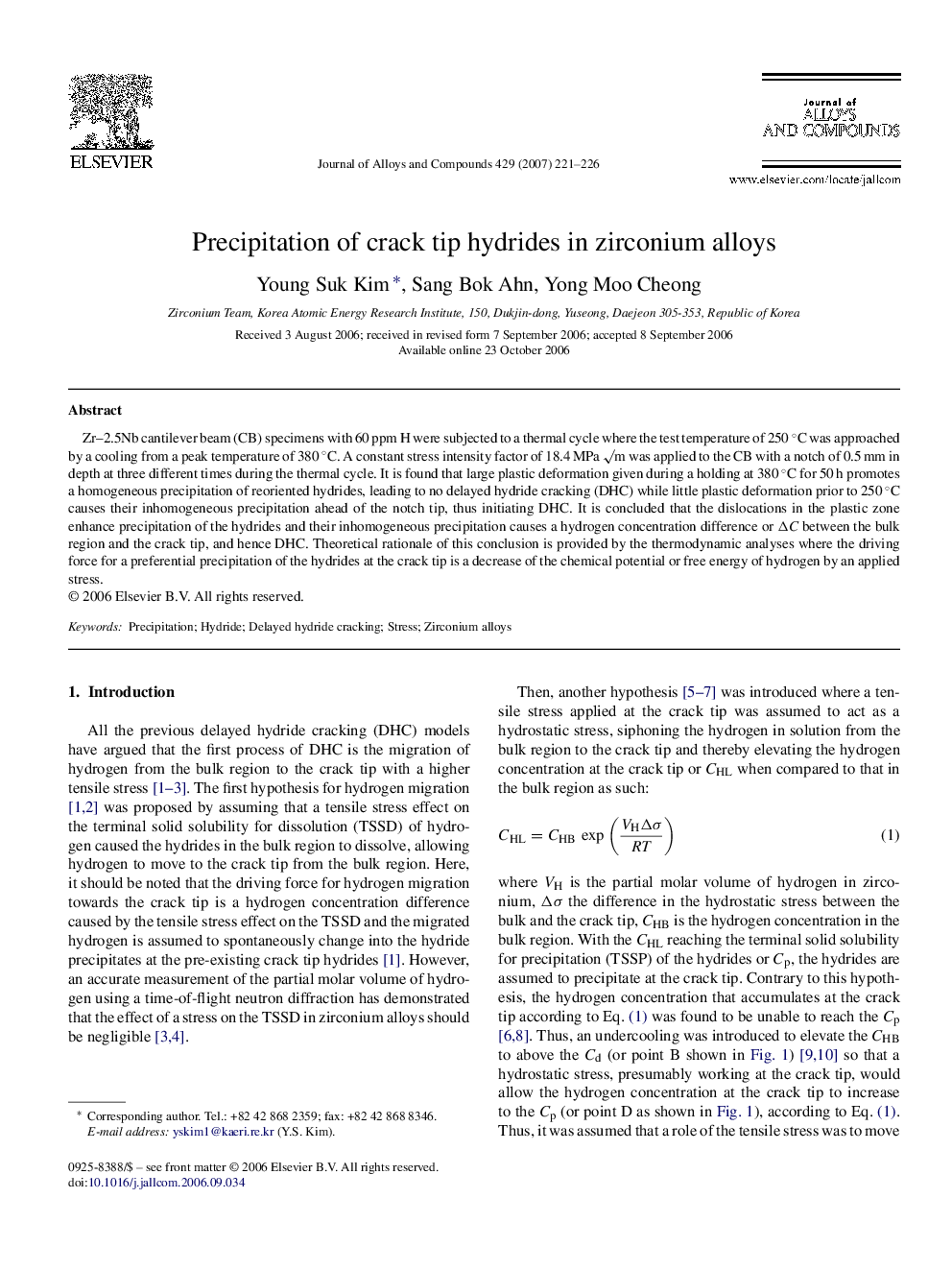| Article ID | Journal | Published Year | Pages | File Type |
|---|---|---|---|---|
| 1626729 | Journal of Alloys and Compounds | 2007 | 6 Pages |
Zr–2.5Nb cantilever beam (CB) specimens with 60 ppm H were subjected to a thermal cycle where the test temperature of 250 °C was approached by a cooling from a peak temperature of 380 °C. A constant stress intensity factor of 18.4 MPa √m was applied to the CB with a notch of 0.5 mm in depth at three different times during the thermal cycle. It is found that large plastic deformation given during a holding at 380 °C for 50 h promotes a homogeneous precipitation of reoriented hydrides, leading to no delayed hydride cracking (DHC) while little plastic deformation prior to 250 °C causes their inhomogeneous precipitation ahead of the notch tip, thus initiating DHC. It is concluded that the dislocations in the plastic zone enhance precipitation of the hydrides and their inhomogeneous precipitation causes a hydrogen concentration difference or ΔC between the bulk region and the crack tip, and hence DHC. Theoretical rationale of this conclusion is provided by the thermodynamic analyses where the driving force for a preferential precipitation of the hydrides at the crack tip is a decrease of the chemical potential or free energy of hydrogen by an applied stress.
